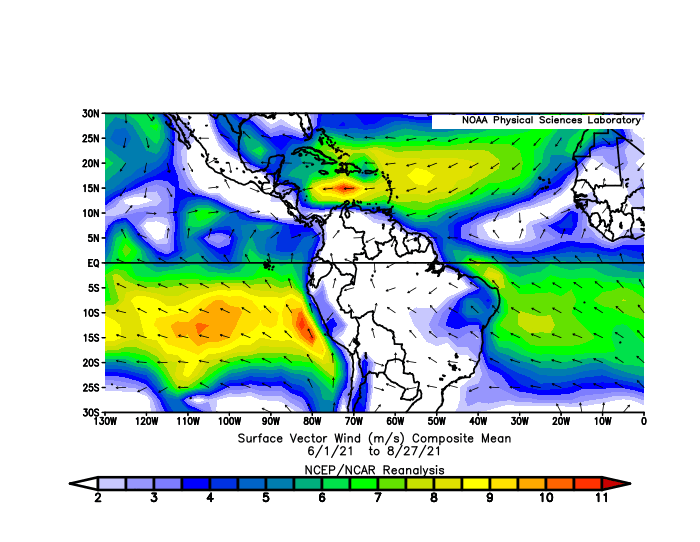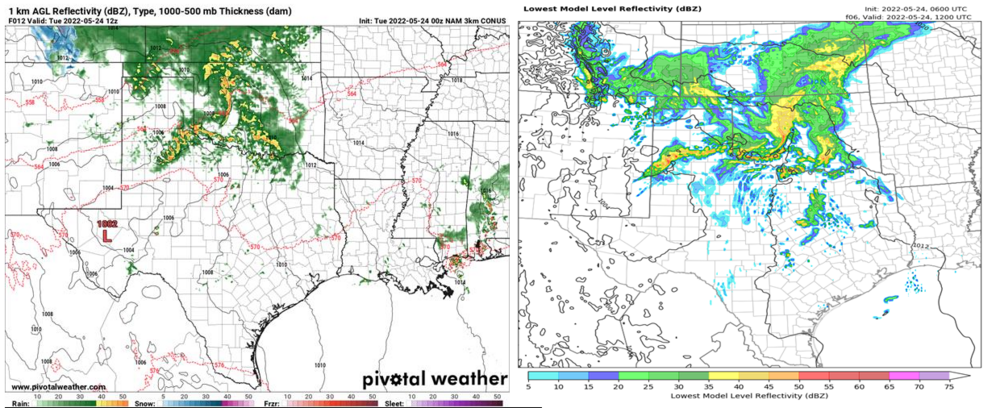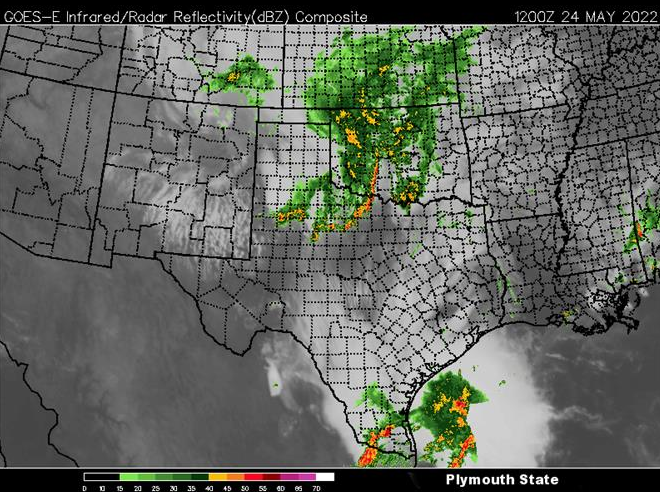-
Posts
1,943 -
Joined
-
Last visited
Content Type
Profiles
Blogs
Forums
American Weather
Media Demo
Store
Gallery
Everything posted by It's Always Sunny
-
Going through my ENSO composites and comparing them to Paul's I found that a lot of what I called CP La Nina, Paul calls Basin Wide. I also have no bucket for WP La Nina, where for me those are CP. I don't think this makes a huge difference but I also have my composites running between Nov-Mar to parallel how NOAA PSL does it. In addition, my contour intervals are fixed which allows for specific anomalies to pop out more than the Reanalysis page which could water things down a bit. I don't think either of us or right or wrong but just shows how much subjectivity is out there which could lead to different results. After looking through everything I do think I should sift through my composites again and make sure I have everything in the correct category per the definitions that I think we all three agree on.
-
I'll go back and check it out. For the composites I put together, some have a "general" pattern/look for certain ENSO setups but there are also instances where I saw a mix of different outcomes which I'll follow up with later.
-
Great stuff, Paul. I just recently posted a bunch of composites on my website as reference but your post comes at a good time. Sorting through the composites I’ve noticed that it is hard to say with conviction that certain ENSO structures frequently correlate to specific winter outcomes (temp/precip anomalies). To me, I am seeing more of a mixed bag of results and due to the small sample size it is hard to completely determine the cause and effect. Even analyzing 500 mb gph anomalies doesn’t always match up with what you would expect. Obviously there are other external factors involved but I now don’t give ENSO state as much weight as I used to. There are so many different flavors of it and this may be another area of research but I feel like the phase evolution of ENSO also may play a role in things (whether it is in a strengthening or weakening state) which is masked by the static indices. I’ll add more musings later when I have the time but just wanted to share my initial thoughts on this because I feel like we are on the same page.
-
I'm interested to see how the PDO index for August looks given what appears to be a warming trend there since July came in at -2.48. -PDO appears non-existent now. That nuked GoA could make for an eventful winter.
-
I’ve only been active on Twitter for a couple of years but it didn’t take me long to realize that unfortunately for some people on there that is their sole identity. Yes this is a safe zone, sometimes lol. Maybe I can become a cult leader on here if I forecast an active winter
-
I swear Twitter is a forum to formulate a cult led by a handful of know it alls and a bunch of brainwashed weather enthusiasts
-
I also know this figure has been circulating but it's definitely interesting that we have this going on in the Srn Hemi and minimum tropical activity albeit things slowly picking up (for the time being). I'd be interested in any study that comes out linking hemispheric connections when it comes to volcanic eruptions. On a side note SAL & TUTTs have been cyclone killers this season. Parts of the NW Saharan Desert & western Sahel drier and hotter than normal this past month which could help generate more dust.
-
Still concerned about the big picture after ~9/10 conditions aren't forecast to be as favorable.
-
A couple articles I read believe volcanic eruptions can shift the ITCZ and/or lower SST/increase wind shear (however for this theory volcanoes that erupted only during El Nino were tested). From my understanding, no major eruptions occurred during a La Nina episode on record. I also read, similar to Raindance that Hunga Tonga had more aerosol forcing which has a larger impact. I pulled up some composites to see if anything was visible and you can make a case that convergence along the ITCZ isn't as strong as last year but I may just be grasping at straws since I don't notice a shift per se. There is noticeable veering >=10N and backing <5N which would support a weaker ITCZ in the Atlantic. Who knows...
-
Temp & precip composites are added via NOAA/NCEI webpage. Rearranged the layout/format once again for easier readability. Best when viewed on desktop but mobile works as well just requires more scrolling. To view the galleries you need to click the image then you can pan left/right to toggle through the images. If you have a question as to why I categorized a certain year where I did, let me know.
-
I wasn't aware of this type of versatility however when I plot it, it still says 1991-2020 climo at the top so does that mean it is calculating 2021's values off of 1991-2020 THEN comparing it to 1950-2010 baseline?
-
500 gph anomaly composites are up but they are out of order on mobile devices I recommend using desktop for time being until I fix it. Next composites I plan to add are temp/precip departures.
-
Ok thanks for the feedback I need to go through them again today and shift a couple around. I will be organizing it based on how the basin looks within that 5 month window. Also since Modoki is still an evolving area of study I feel like there are varying opinions on what is one and what isn’t. I feel like there are some pretty clear-cut ones but also a lot of ones that are arguably borderline, especially situations where the EPac is near average. That’s just my thought process but open to suggestions I’d like to make this a good, quick, reference source rather than having to go through the NCEP site every time or trying to remember something from 20 years ago.
-
I added winter (Nov-Mar) ENSO composites to my website. Feel free to take a look! If you find something out of place please let me know. There are likely a few since I've been focusing on compiling them (there are quite a few!). Eventually, I also want to incorporate 500 gph anomalies for the corresponding years for quick access and analysis. https://weatherchest.weebly.com/composites-new.html
-
I don't think they are coupled either but the Walker Circulation gets enhanced with a -IOD in place with concurrent La Nina. When the -IOD weakens late this year/early next year I think that's when the "rug gets pulled out", not to mention some unforeseen upwelling occurring between now and then that may weaken La Nina even earlier. I'm expecting La Nina to hold through the end of the year but I think once the calendar flips we could be heading into Neutral territory, with El Nino by next summer.
-
-IOD certainly helping the cause over the WPAC. Also a good time to take advantage of the Nina induced EWBs keeping that warm pool going and cash it in next year.
-
I have my sources for composites but with the ever evolving internet there may be something else out there...having said that, what do you use for SSTa composites? I currently use https://psl.noaa.gov/data/composites/day/ but not sure if there is something better out there. I know I can break out coding and do it that way but looking for something more convenient. Thanks!
-
ENSO neutral isn't a bad phase to be in either for Mass.
-
Hm ok try this link https://weatherchest.weebly.com/ I have it posted on my MA blog too if that one doesn’t work: http://www.baystatewx.blogspot.com .
-
First shot at it. Enjoy! https://weatherchest.weebly.com/home/preliminary-winter-outlook-2022-2023
-
I think it's too early to write anything off but when you take potential ENSO phase, -IOD, +QBO just to name a few teleconnections I'd lean towards an average season with potential for above average. ENSO will still be presumably weak La Nina, maybe neutral, which generally fares well for New England. Remember, you can have a temperature forecast be "above average", but it'll still be cold enough for snow most of the time. *EDIT* I also want to add that the years a +QBO & La Niña overlapped is only a three-year dataset which is very small so I would not put a lot of stock into that. If you just look at +QBO alone the setup is rather favorable.
-
NMME generally does pretty good. Looking back to May it's done a rather stellar job for most of the country without getting into specifics.
-
Something quick I threw together. Just keep in mind this focuses mainly on the QBO as a stand-alone along with possible ENSO influence. I haven’t yet sifted through the bulk of the teleconnection indices/models I usually refer to for a seasonal outlook. Time allowing I’ll try and put something together. https://baystatewx.blogspot.com/2022/08/qbo-and-its-potential-implications-on.html?spref=tw
-

Texas/Oklahoma Discussion & Obs Thread 2022
It's Always Sunny replied to It's Always Sunny's topic in Central/Western States
Wow models blew this one. Displayed are 00Z 3km-NAM & 06Z TTU WRF. Couple HRW models had no convection in S TX either. HRW FV3 & GFS were wayyyy too far north with convection. 18Z guidance yesterday was even better than these two models shown. -

Texas/Oklahoma Discussion & Obs Thread 2022
It's Always Sunny replied to It's Always Sunny's topic in Central/Western States
There is a lot of mid-upper level dry air which has been modeled the entire time but it's saturated high enough to precipitate. From a weather geek standpoint it's not often you see a bone dry mid-upper level sounding with a low level stratiform deck that begins as liquid water and reaches the surface as sleet or freezing rain. It's more frequent to see precipitation begin as snow, melt and refreeze. Thankfully this stratiform type of setup allows everything to be light with low QPF amounts. However, to get sleet we will need some ice crystals which may be hard to attain given the static look to soundings. You would need colder temperatures in the boundary layer and likely slightly better lift than modeled to get the ice crystals necessary for that to materialize, otherwise we're looking at FZRA or FZDZ.






